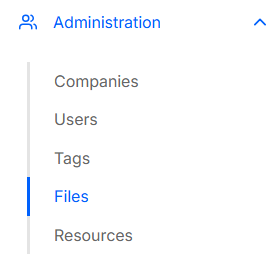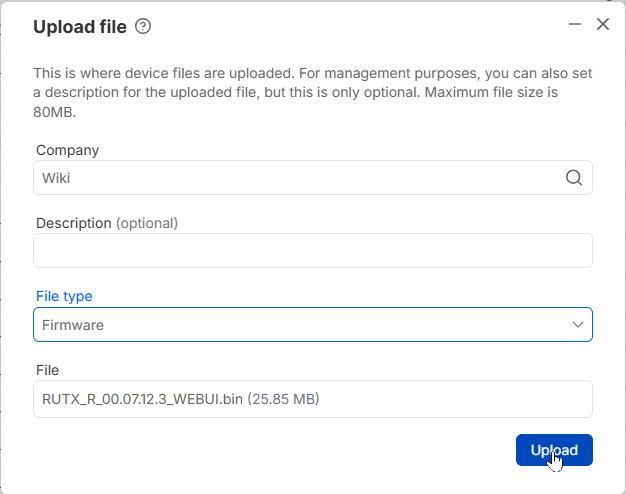RMS Files
Appearance
Main Page > IoT Platforms > RMS > RMS Manual > RMS Administration > RMS Files
Summary
The Files section is located in the Administration section. This is where device files are uploaded, and exported files from the Export top menu section are stored. This Files section includes firmware, (periodic) backup, event logs, task manager and troubleshoot files. For management purposes, you can also set a description for files.
Overview
- Upload new file
- Remove selected ones.
- Search through existing ones by their name and description.
- Filter existing files by their type, company, and device model.
- Download the file from RMS.
- Additionally, you can configure your table view.
Uploading files
- To upload file(s) go to the Administration, on the Left sidebar panel and click on Files.
- Move your mouse cursor to the top menu, and click on
- In the new dialog window, select the company from the drop-down list.
- (Optional) you can enter a short description for your file.
- Select the file type.
- Then select the file that you wish to upload.
- Click the Upload button. Your file will appear at the top of the Files table.
You can upload these types of files:
- Firmware
- Configuration
- Task manager file
Removing files
- To remove file(s) go to the Administration, on the Left sidebar panel and click on Files.
- Select which file(s) you'd like to remove.
- In the Actions menu, select Remove file(s).
- In the new dialog window, you must confirm the file(s) removal by clicking on the Confirm button.




